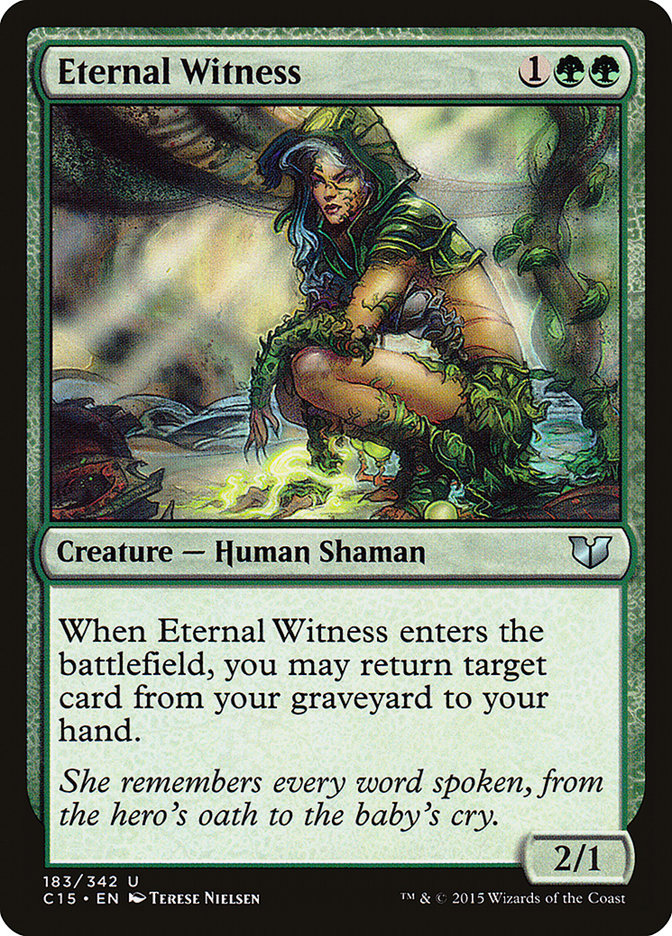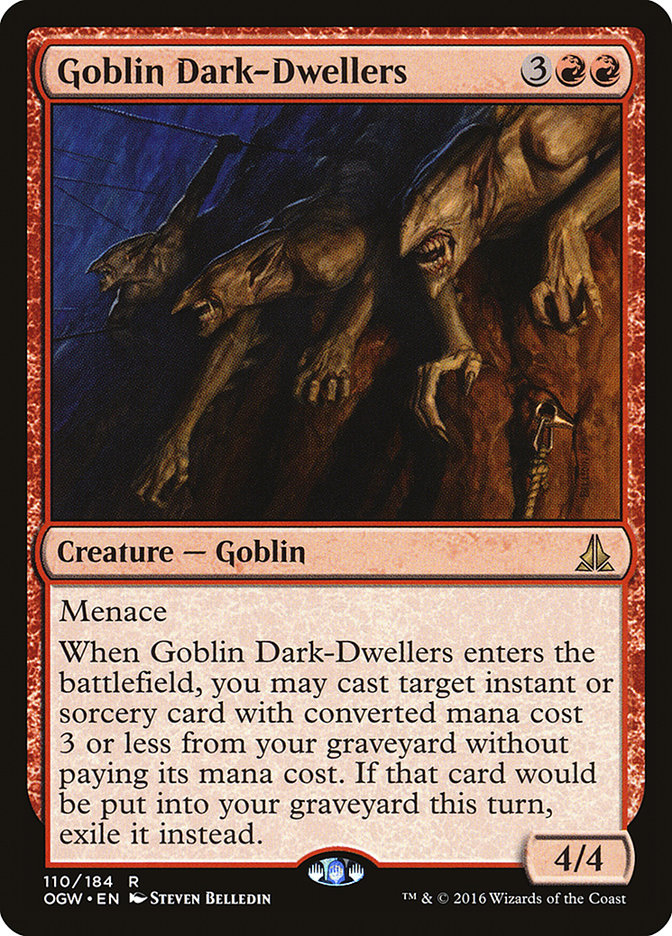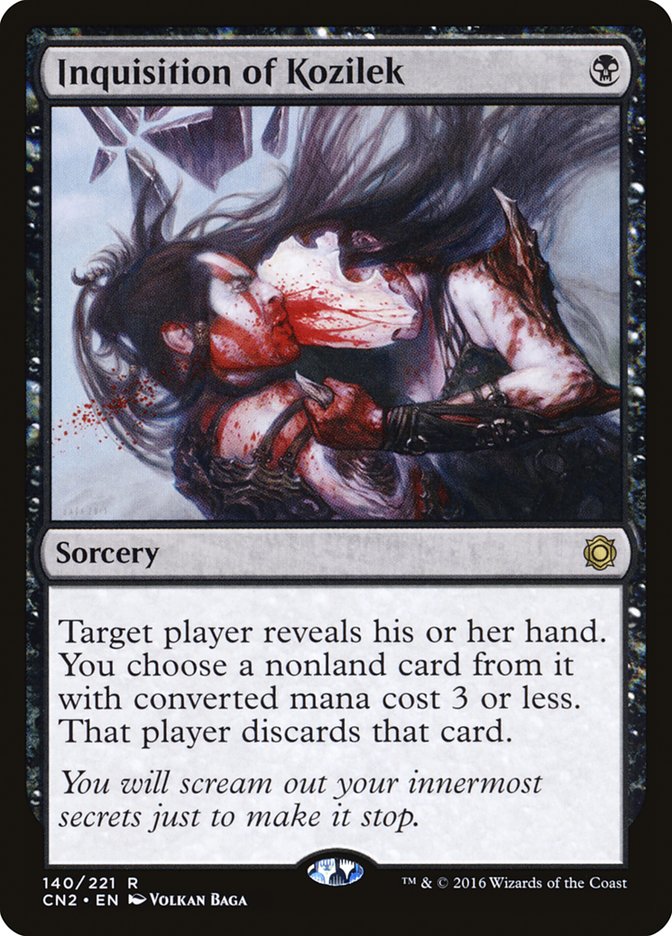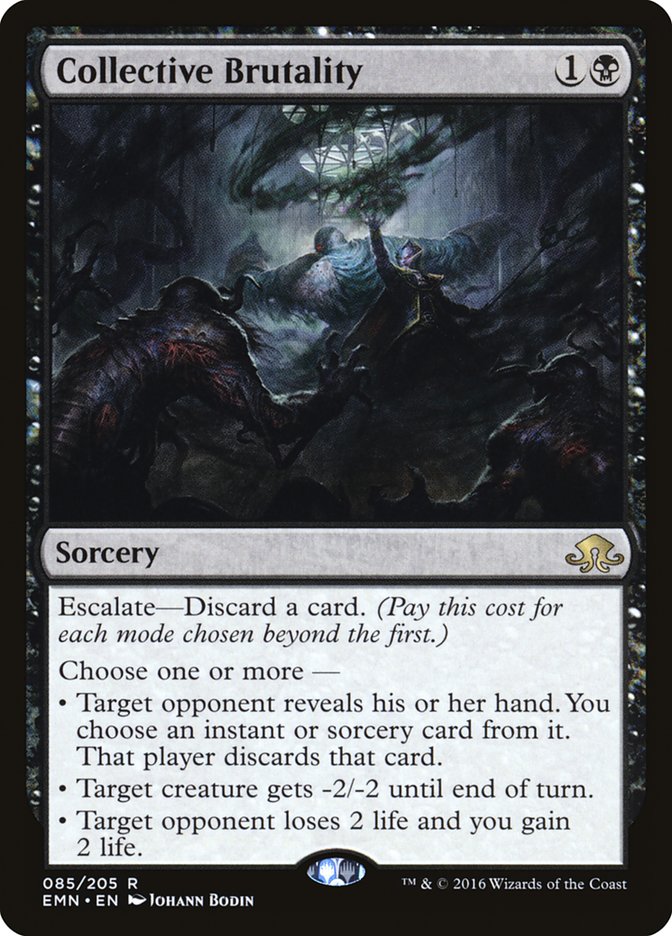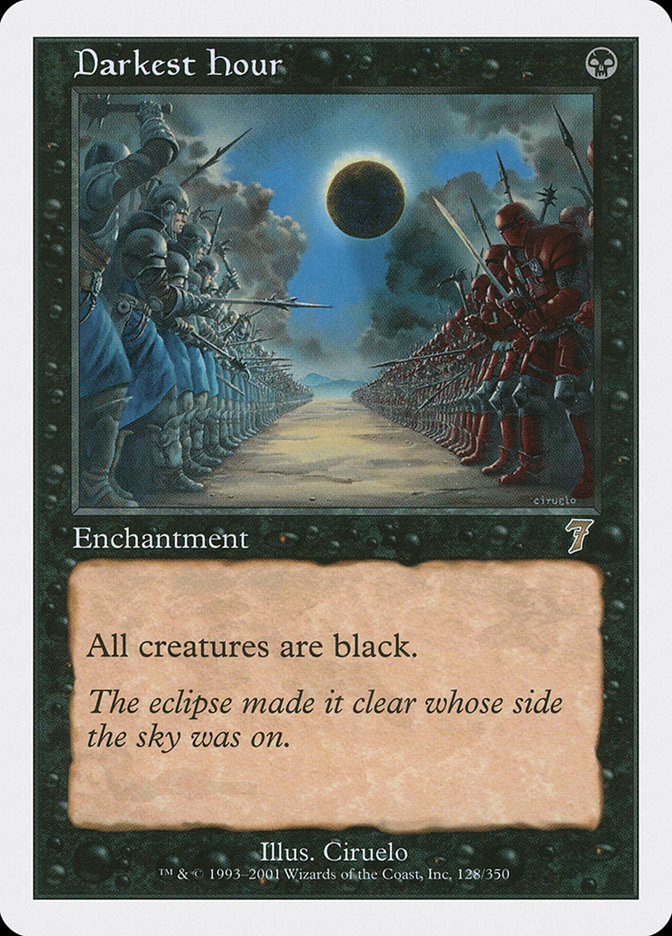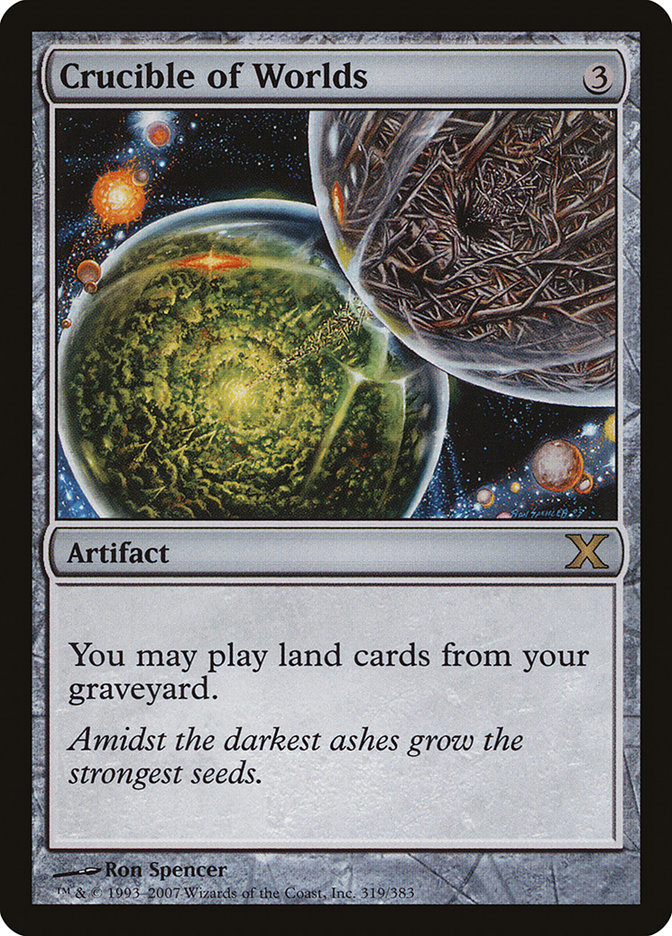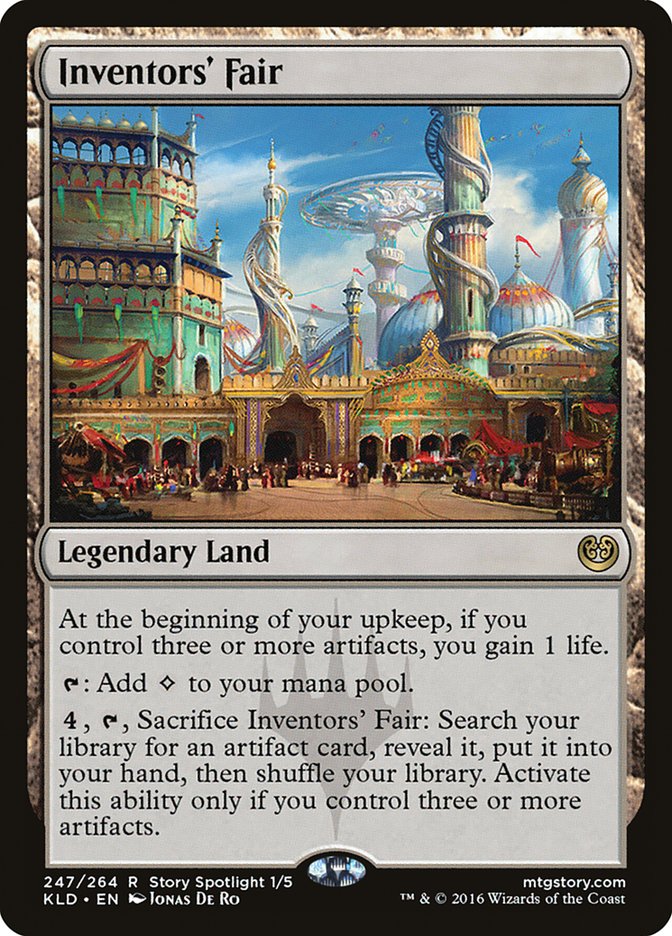Playing Lantern is Modern has been the norm for me for probably about a year. While I’ve hopped off of it from time to time, like when I shifted to an anti-Eldrazi Planeswalker Control deck for Grand Prix Detroit, I keep coming back to the deck. There are a lot of reasons for that.
1) The Diversity of Modern Lets Lantern Hide
If you’ve played a lot of Magic, you know that there are more diverse formats and less diverse formats. Let’s use the current moment of tournament Magic as an example.
Here is a rough breakdown of the Standard metagame in live events since October:
B/G Delirium: 22%
W/U Flash: 21%
W/R Vehicles: 12%
B/R Aggro: 7%
Mardu Vehicles: 5%
Other: 26%
If we make the same kind of breakdown for Legacy (wrapping the various B/U/G decks into the “Sultai variants” package), we get this:
Miracles: 10%
Death and Taxes: 10%
Eldrazi Aggro: 9%
Sultai variants: 8%
Reanimator: 7%
Elves: 5%
Grixis Delver: 5%
Other: 46%
Finally, let’s look at Modern, again for live events since October:
Infect: 9%
Dredge: 7%
Eldrazi Aggro: 7%
Affinity: 6%
Jund: 5%
Valakut: 5%
Other: 61%
I don’t know when Modern overtook Legacy as the most diverse format, but it has definitely become so. Even if you split the Sultai decks out, your “Other” category for Legacy would still be less than that of Modern.
Because of this diversity, it is easy to slip through the cracks of other people’s choices in metagaming. This is a metagame where you’ll see strange things happening at the top of events, like these two decks from earlier this week:
Creatures (16)
- 2 Abyssal Persecutor
- 4 Phyrexian Obliterator
- 4 Geralf's Messenger
- 4 Hangarback Walker
- 2 Kalitas, Traitor of Ghet
Planeswalkers (4)
Lands (24)
- 24 Swamp
Spells (16)

Lands (17)
Spells (43)
- 4 Krark-Clan Ironworks
- 4 Reshape
- 4 Thoughtcast
- 4 Chromatic Sphere
- 1 Mind Stone
- 4 Terrarion
- 4 Chromatic Star
- 3 Lotus Bloom
- 1 Banefire
- 3 Open the Vaults
- 2 Mox Opal
- 4 Ichor Wellspring
- 4 Faith's Reward
- 1 Codex Shredder
Sideboard

When you’re playing a Lantern deck, you get to swim in a sea of decks that are wildly unlike anything you are doing. Modern is full of unique interactions, but as distinctive as Burn is as an archetype, or Pyromancer Ascension is, they still exist along a set of axes that players might be equipped to interact with.
Lantern functions as a Prison deck in that it starts taking opponents out of the ability to even play the game. As Zac Elsik likes to say, the whole goal of the deck is to stop letting your opponent play Magic. By exerting control on what is actually drawn in the game, you can stop an opponent from even getting access to the cards that might affect you. This is uniquely unique, which is saying something in such a diverse format.
To handle this, a Lantern opponent has to do specific things to stay in the game.
If you are, say, Jund, you can simply fight a rare deck like Burn or Soul Sisters on the virtue of a normal set of Magic cards and win or lose without being forced to bend over backwards. You might do much, much better if you have a narrow card like Feed the Clan, but if you don’t, you can still fight. Jund happens to be one of the best-equipped decks to fight Lantern, but even then, the specific cards that are best against Lantern aren’t necessarily the ones that end up getting played.
2) Sideboard Cards in Modern Are Usually Narrow
While there are a great many cards in Modern that are devastating in their scope, they are often narrow. This is much less the case in Legacy. In Legacy, most decks can reasonably expect to cover the vast majority of opponents with the sideboard (though Storm can be a true challenge for the non-blue among you).
Take this list from Grand Prix Chiba:
Creatures (6)
Planeswalkers (2)
Lands (21)
Spells (31)

It would be hard to imagine that Yuuya didn’t have great sideboard options for any potential opponent he might have played against. Legacy isn’t just less diverse than Modern right now; it is also more armed with tools to fight whatever you feel like you might need to fight. This is mostly because Legacy enjoys a significantly larger card pool (16,199 cards in Legacy to 10,441 for Modern), the bulk of which come from an era where ideas about what was good or bad might be considered, let us say, “unrefined” to modern eyes. Pyroblast is a great example in the above sideboard, because it simply can accomplish such a significant amount.
All of this is significant to Lantern decks because, as a rule, Modern is actually still dominated by a small set of decks which only barely overlap with Lantern. Of the most popular decks, four of them are essentially creature-based, which gives great incentives to every deck to fight creatures (of which Lantern has few to none). Of these decks, only one is an artifact deck, which disincentivizes people to truly, aggressively hate out artifacts.
There is some scary artifact hate out there.
There are other cards that affect artifacts that see play, but these are some of the most commonly run into.
In order to break out of an established Lantern lock (Lantern and “mill rocks” both out, nothing endangering the Lantern player’s life total), only Ancient Grudge can manage it, and then only if a Pyxis of Pandemonium or Grafdigger’s Cage isn’t around to stop it. Any other card is gone and is only going to affect the game if it gets help.
If you’re a rational player out there and you’re looking to build your sideboard, choosing a card like Shatterstorm or Vandalblast is a big commitment to (mostly) Affinity. The very best card against a Lantern player of the above cards, Ancient Grudge, is only even playable in a narrow subset of decks, and then only if that player has decided it best serves their goals over the other potential anti-Affinity cards.
While it is absolutely the case that every less-popular deck benefits from the narrowness of sideboard options in Modern, it is even more so for Lantern because of the unique way that it approaches the game.
3) Mulligans Work to Lantern’s Advantage
If you’re a Lantern player, you get the advantage on mulliganing in two ways.
First of all, you’re incredibly good at mulligans. The majority of the Lantern deck is incredibly cheap, so you don’t need much in the way of lands. It is also massively redundant, with cards in the deck that help you find whatever you’re missing. While you’re often trying to set up a three-plus card combo (a Lantern of Insight to see what is happening, an Ensnaring Bridge so you don’t die, and some number of Ghoulcaller’s Bell, Codex Shredder, and Pyxis of Pandemonium to stop anything relevant from happening), you don’t need to fully set up to get things sewn up. Even after mulliganing, you’re often looking at a hand that is some version of this:
This is a great hand, even if you were to take out any one of the spells in it because of an opponent’s discard effects.
Conversely, if you are sitting opposite a Lantern player, mulliganing is very hard.
To beat Lantern, you need to either have sufficient disruption to keep them off of their game to lock you out or sufficient speed to kill them before they do (or a combination thereof). This is a pretty intense requirement, and cannot be met by any old hand. Aggressively mulliganing to find that hand can be important.
Of course, once you mulligan, the post-mulligan scry is something that a Lantern player can actively interfere with at very little cost. Blindly using a mill effect isn’t what the Lantern player usually wants to be doing, but if it means messing with a scry, most players will do so.
There really isn’t even a great way to “game” this if you are the opponent. If you leave a bad card on top of your library, they might not have the Codex Shredder or Ghoulcaller’s Bell, and then you’re stuck drawing the card. Alternately, if you do leave the bad card on top and they mill it, you’re still in the position that is basically the equivalent of having forgotten to scry at the beginning of the game.
Furthermore, there is this to contend with:
Lantern players tend to run six to eight discard spells in the maindeck and have seven to ten after sideboarding in matchups where they want more. This means that your mulligans are running headfirst into a potential world of hurt when the discard hits you on top of it all.
Other decks with discard can run this same effect on Lantern, but with the copious searching of that deck, not to mention Academy Ruins, it is much more resilient to the same hate.
4) Practice Makes Perfect
This is really quite simple. Modern’s diversity means that your format knowledge with a deck is a critical part of your ability to convert hard situations into wins. Format knowledge always matters in any format, but especially in particularly open formats, knowing what to do in any number of situations is a huge edge.
Perhaps it is because I’m such a hater, but I’ve been basically in love with Lantern for over a year now, and at this point, it is the deck I’m most practiced with.
5) Lack of Practice Is a Killer
In 2010, I came into an empty SCG Open room in Worcester and saw two players, I think James Rynkiewicz and one of his friends, playing the High Tide mirror match. I asked how long they’d been at it, and they told me it had been a few hours.
I was deeply impressed; that’s the kind of grueling mirror match that can take a great deal of time just to get a very few matches in.
It’s the very same thing with Lantern.
If you decide you want to playtest against Lantern, first of all, it doesn’t do you any good to test against someone who is bad with Lantern. They will simply fail, again and again, to do what is necessary to win the game through any degree of resistance.
Unfortunately, to not be bad with the deck is actually actively hard. I’ve talked with Zac Elsik about this and we still see very good players playing the decks on streams and videos making choices that fly in the face of what we think makes sense for the deck. For the people that aren’t that skilled, the opportunities to lose with the deck are endless.
Presuming that you can find that person, now you have to playtest against them.
This isn’t like deciding you want to beat Burn or Infect, where the games will tend to be very, very fast. This isn’t even like deciding to beat Tron, where the games won’t be as fast but they’ll tend to end quickly. This is playing against not just a Prison deck, but a ponderous one.
If you set aside three hours after work, you might just find that the stress and tiredness of a normal day will put you in a place where you’re ill-prepared to have a good playtest session. It can be grueling, and the game situations that your playtest partner is finding themselves in are mostly not going to be cross-applicable to any other matchup.
And yet a player would need to do this work to properly understand what they need to do if they are facing a skilled Lantern player. Some of the very subtle choices, like when to use a Scalding Tarn, can be the entirety of a match. Without the practice, many games that a Lantern opponent should have won, they won’t.
Because of the very “alien” nature of Lantern, even a very good player can make missteps that they simply wouldn’t have made against another deck they have little to no experience against. If someone hasn’t ever played against Tooth and Nail, they might make mistakes, but they are still in the realm of the Big Play deck like Tron or Through the Breach and they can understand how to interact with it in that way. Lantern doesn’t really have the same analogs.
6) Demoralizing the Opponent Is a Winning Strategy
Whereas the previous point is about winning because your opponents don’t know how to do so, this one is about winning because the opponent has simply lost the will to fight.
A player who has truly given up ceases to be a real opponent. You’ve probably seen this in your own lives, either at a tournament or, more likely, in playtesting, where someone you’re playing keeps giving up because they think the matchup is bad.
They may be right. The matchup may be bad. But once they’ve stopped trying, they’ll stop finding the unlikely path out to victory.
Lantern doesn’t create a hard lock. Instead, it slowly stitches up a game so that it is “basically over,” but not truly so. If an opponent has only three cards left that matter, a competent pilot can take a Lantern of Insight and two mill rocks and end the game. If there are a sufficient amount of cards left that do matter, this isn’t the case.
Despite this, many players simply give up. If they want to turn their 5% chance of winning into practically 0%, sign me up.
7) Lantern Is a Powerful Choice in a Vacuum
While Lantern is not a wildly popular deck for many reasons, it is just a generically powerful deck. Doing something on your own terms and doing it well is a fundamental part of any good Modern deck. When you look at the controlling decks in Modern, very nearly all of them have a proactive strategy, and the degree to which they are reactive tends to be very small.
Lantern does something powerful that can simply be too much for many decks to deal with. If you’re playing a Merfolk deck, you can beat a Lantern player, for example, but your ability to really interact with the game meaningfully is relatively minor. This is the case for a lot of decks in Modern.
I have had many games where I look at an opening hand, and I know that only the most powerful draws from an opposing deck are even going to have a chance, and that can be without even knowing what I’m playing against.
That’s a very good thing to get out of a deck in Modern.
Here’s my current build:
Creatures (2)
Lands (18)
Spells (40)

I’ve sometimes had that sideboard Abrupt Decay be a Collective Brutality, and recently I’ve thought about a straightforward removal spell like Smother, now that I’m not playing red for Pyroclasm or Ghirapur Aether Grid.
The main deck is pretty straightforward now; I’ve long held that Crucible of Worlds is where this deck wants to be, and now that Inventors’ Fair is in print, it seems like the world has come to agree with me.
My sideboard is a little unusual because of Trading Post, Witchbane Orb, and Phyrexian Metamorph, but each of these cards has been a valuable part of numerous gameplans. A more conservative build of this deck could easily replace these cards with any number of options, most likely in the realm of Grafdigger’s Cage, Pithing Needle, Seal of Primordium, and Thoughtseize.
I still miss Ghirapur Aether Grid, but I struggle to stretch the mana now that we live in a world where Infect is the most likely opponent. As it stands, playing a heavy G/B base with a little touch of blue has been treating me well.
There are a lot of reasons I play Lantern. I like how the diversity of the metagame lets it avoid hate and that sideboard cards often are not ideal against it. I like the structural and psychological advantages it provides. I like how much it rewards format knowledge and how much it punishes a lack of understanding the deck. Finally, I just like that the overall archetype is proactive and strong.
That’s why I play Lantern in Modern. Why do you play what you play?




